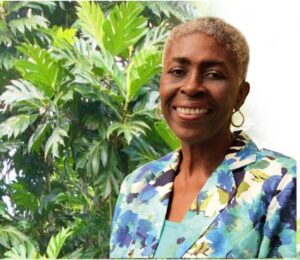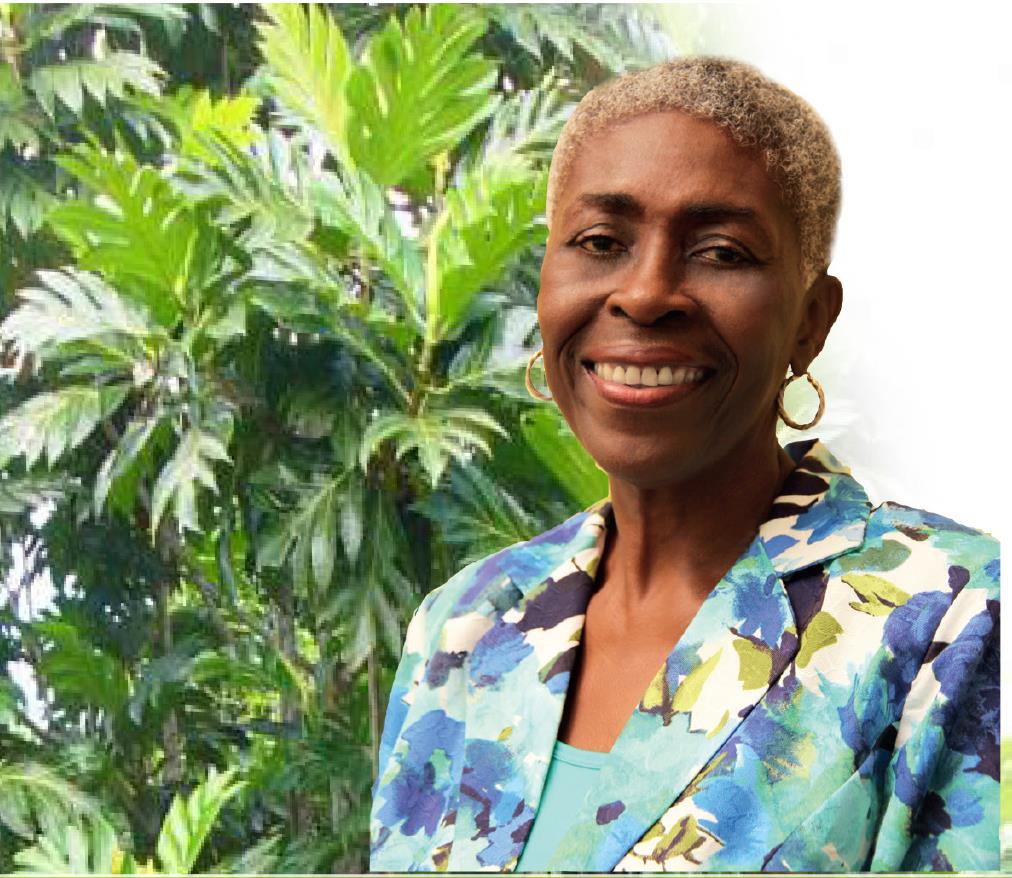Laura Roberts-Nkrumah grew up in St. James, Trinidad and Tobago, a community rich with plant life.
 Professor Roberts-Nkrumah is a Professor of Crop Science and Production within the Department of Food Production at UWI St Augustine’s Faculty of Food and Agriculture (FFA). During her more than 30-year career, she has trained many students in the science and production of various crops.
Professor Roberts-Nkrumah is a Professor of Crop Science and Production within the Department of Food Production at UWI St Augustine’s Faculty of Food and Agriculture (FFA). During her more than 30-year career, she has trained many students in the science and production of various crops.
What inspired your love for breadfruit?
Breadfruit is a special gift. The trees bear so abundantly with so little attention. Wherever breadfruit trees thrive, many people have been spared of starvation when other sources of food, locally grown or imported, were in scarce supply.
What is one thing you would like people to know about breadfruit?
Breadfruit trees are generational because they are long-lived and can extend their benefits to several generations of a family or a community.
When did you start working with the crop and why?
I started working with breadfruit in 1990. Although it was being exported, there was little information to support commercial production and utilization. I was convinced that this crop had much potential, particularly as a locally available food source, and decided to begin to address some of the knowledge gaps that had been previously neglected by research.
How have you been working or affiliated with the crop?
My work with breadfruit was done at the University of the West Indies in Trinidad and Tobago. The first and enduring area of focus was to find out about breadfruit in the Caribbean. I started by looking at key constraints to production and utilization, then surveyed the existing germplasm in the region and established a breadfruit collection to expand the range of materials on which research could be conducted to address these constraints. I have also worked on propagation, physiology and agronomy important to commercial production e.g. phenology, tree height control, and disease incidence. Through collaboration with other colleagues, nutrient composition, starch characteristics and consumer acceptance of fresh breadfruit and breadfruit products were explored.
Much of the information has been shared at several training activities in breadfruit propagation and production in the Caribbean, manuals – including two on the FAO publications site- as well as conference and seminar presentations and in journal publications. A major information-sharing event to promote breadfruit commercialization for food and nutrition security was the International Breadfruit Conference, I co-convened in Trinidad and Tobago in 2015.
What is your favourite breadfruit dish?
Breadfruit souse, which is a Barbadian dish. Souse is a cold pickle in which the main ingredients are lime juice, cucumbers, salt, pepper and other condiments.
In your opinion do you think breadfruit is a worthy opponent in the battle to conquer world hunger?
Several important features allow breadfruit to make a significant contribution to the battle against hunger. It is highly productive providing food for both human beings and livestock. It supplies energy from a form of starch that does not promote NCDs and it is a good source of other nutrients e.g. potassium. Breadfruit can be cooked using various methods and is versatile in the range of dishes suitable for any meal and it can be processed into many different types of products. Therefore, everyone can consume breadfruit in one form or another. In addition to its importance for subsistence, it is also a useful source of income at the household and farm levels.
Do you have a favourite breadfruit story?
I do not have a favourite story but I find the following Vincentian expression very meaningful: ‘Yuh (You) cut down mi (my) breadfruit tree’ which means ‘You have destroyed my livelihood’.
What is one important message you would like people to know or learn about breadfruit?
Breadfruit trees should be valued. They provide many benefits about which most persons are unaware, and there are many more to be discovered. Therefore, one should think twice before cutting down a breadfruit tree.
Last words!
Breadfruit is a number one candidate as a community tree, particularly where homeowners do not have enough residential space to accommodate their own trees. These multi-purpose trees are self-propagating and a small grove can support the well-being of a community as a source of food, craft, medicine, income and environmental benefits, not least of which is how their beautiful crowns enhance the aesthetics of a landscape. Breadfruit is a very powerful model for community building as every part of the plant is useful and it encourages sharing within a community.

